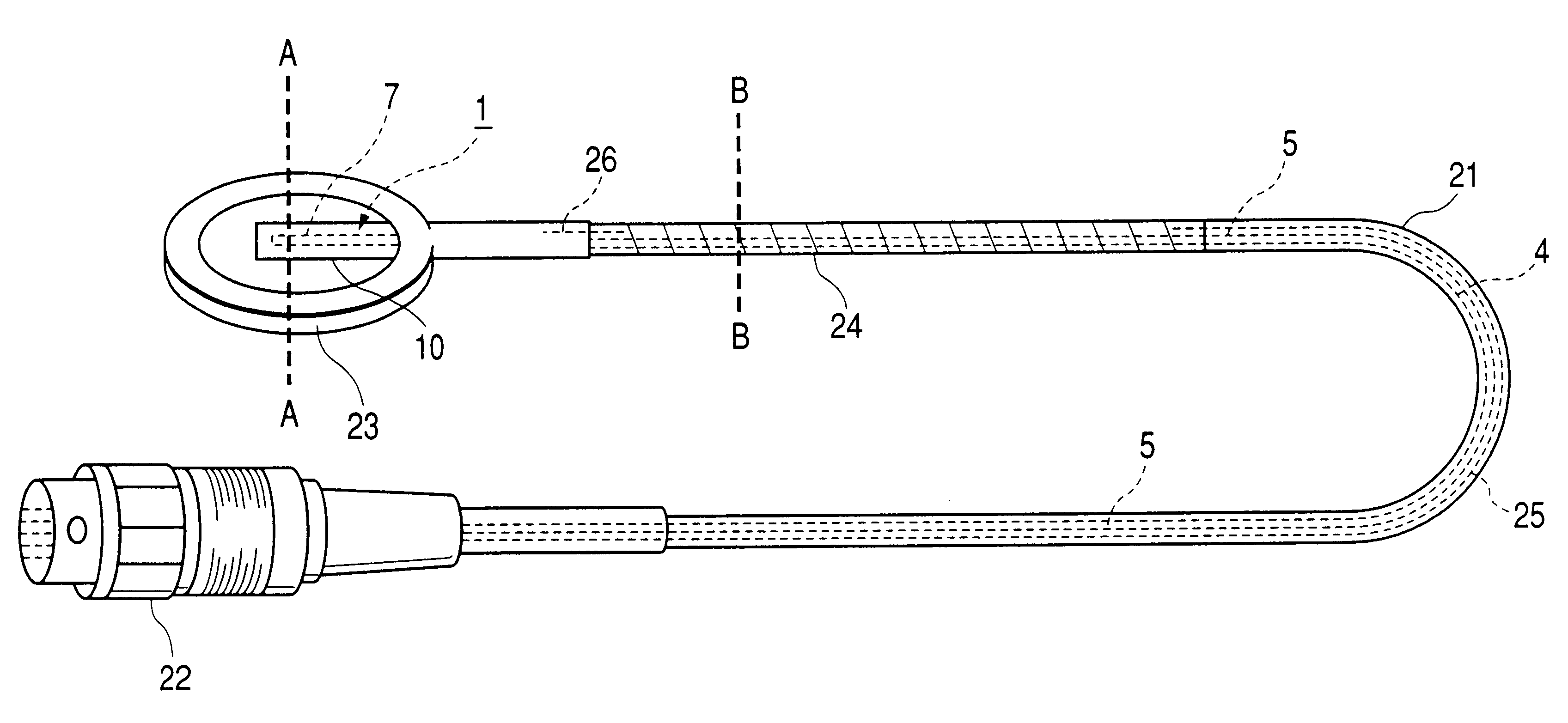Biological sensor
- Summary
- Abstract
- Description
- Claims
- Application Information
AI Technical Summary
Benefits of technology
Problems solved by technology
Method used
Image
Examples
Embodiment Construction
Referring now to the drawings, a description will be given of an example of the construction of an embodiment of a biological sensor in accordance with the invention. FIG. 1 is a perspective view illustrating a first example of the construction in accordance with an embodiment of the invention. In FIG. 1, portions corresponding to the portions of the conventional example are denoted by the same reference numerals, and a description thereof will be omitted, as required.
An ISFET 1 is provided with a reference electrode 2 and electrode portions 3, although not shown, in the same way as the conventional example shown in FIG. 3, and lead wires 4 are connected to the electrode portions 3, respectively. A gate portion 7 at a distal end of the ISFET 1 and a portion of an outer periphery of the reference electrode 2 are covered with a gas-permeable silicone membrane 10. In addition, a tube 5 serving as a leading portion for accommodating the lead wires 4 is covered with a cable cover 21, and...
PUM
 Login to View More
Login to View More Abstract
Description
Claims
Application Information
 Login to View More
Login to View More - R&D
- Intellectual Property
- Life Sciences
- Materials
- Tech Scout
- Unparalleled Data Quality
- Higher Quality Content
- 60% Fewer Hallucinations
Browse by: Latest US Patents, China's latest patents, Technical Efficacy Thesaurus, Application Domain, Technology Topic, Popular Technical Reports.
© 2025 PatSnap. All rights reserved.Legal|Privacy policy|Modern Slavery Act Transparency Statement|Sitemap|About US| Contact US: help@patsnap.com



